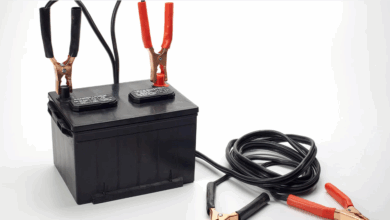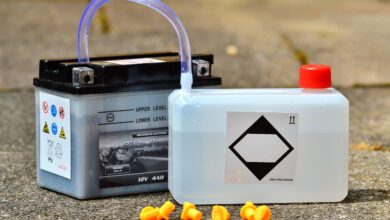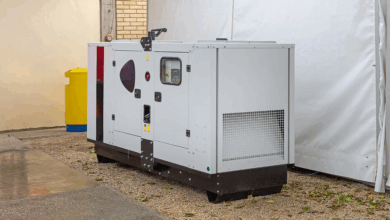50 Amp Generators Explained: Powering Your Biggest Needs

50 Amp Generators Explained: Powering Your Biggest Needs
Life throws curveballs. Sometimes it’s a powerful storm knocking out grid power for days. Other times, it’s a weekend getaway in a large RV far from any hookups, or a remote job site needing serious power for heavy machinery. In these situations, a standard portable generator might only cover the basics – a few lights, the fridge, maybe a small appliance. But when your needs are significant, when you need to power major appliances, multiple tools simultaneously, or even a substantial portion of your home, you step into the realm of the 50 Amp generator.
These aren’t your average small backup power sources. 50 Amp generators are workhorses designed to handle heavy loads, providing the muscle needed for those "biggest needs." But what exactly is a 50 Amp generator, and why is that rating so important? Let’s break it down.
What Does "50 Amp" Mean in a Generator?
Amperage (Amps or A) is a measure of the electrical current flow. Think of voltage (Volts or V) as the pressure pushing the electricity and current (Amps) as the volume of electricity flowing. Power (Watts or W) is the result of that pressure and flow working together – essentially, the amount of work the electricity can do (Watts = Volts x Amps).
Most powerful portable and standby generators designed for larger applications operate on a split-phase system, providing both 120 Volts and 240 Volts simultaneously. This is just like the electrical service coming into your home, allowing you to power standard 120V outlets and higher-voltage 240V appliances (like central air conditioners, electric dryers, or ovens).
A generator rated for 50 Amps means it has an outlet (typically an NEMA 14-50R receptacle, often found on RV pedestals or transfer switches) capable of safely delivering up to 50 Amps of current at its rated voltage. In a split-phase system (120V/240V), this 50 Amp rating usually refers to the total current capacity distributed across the two 120V legs and available for 240V loads.
Let’s look at the power this represents:
- At 120V, 50 Amps could theoretically power 50A * 120V = 6000 Watts (6 kW).
- However, the 50A receptacle on a split-phase generator is rated for 50A per leg at 120V and provides 240V across the two legs. The total power output available from a generator with a 50A (14-50R) outlet is typically much higher. A 50A generator operating at 240V can deliver 50A * 240V = 12,000 Watts (12 kW).
Therefore, when you see a generator with a 50 Amp outlet, you are generally looking at a unit capable of producing around 9,000 to 15,000 Watts (or more) of power, with a common range being 10,000 to 12,000 running watts. This is a substantial amount of power, far exceeding the capacity of smaller generators (often 15-30 Amps, 1800-5000 Watts).
Why 50 Amps Matters: Powering Your Biggest Needs
The significant power output associated with a 50 Amp capability opens the door to handling loads that would overwhelm smaller generators. Here’s where they shine:
- Whole-House Backup (Partial or Significant): During a grid power outage, a 50 Amp generator connected via a proper transfer switch can power many essential circuits in an average-sized home. This includes lights, refrigerators, freezers, sump pumps, furnaces (if gas/propane), well pumps, and potentially even a central air conditioner or electric range (though careful load management might be needed). It provides a level of comfort and normalcy during extended outages that smaller generators cannot match.
- Large RVs and Fifth Wheels: Many modern, large RVs and fifth wheels have 50 Amp electrical service. These RVs are equipped with multiple high-draw appliances like two air conditioners, electric water heaters, microwaves, residential refrigerators, and entertainment systems. A 50 Amp generator is essential to run these appliances simultaneously when boon-docking or camping without shore power hookups. Plugging a 50A RV into a smaller generator’s 30A outlet severely limits which appliances can be used.
- Construction Sites and Heavy Equipment: Job sites often require powerful tools like air compressors, welders (smaller ones), concrete mixers, large saws, and multiple power tools running concurrently. A 50 Amp generator provides the robust and stable power supply needed to keep a crew working efficiently, even in remote locations without access to grid power.
- Emergency Preparedness for Extended Outages: For those living in areas prone to severe weather or lengthy power disruptions, a 50 Amp generator offers greater resilience. It can keep essential systems running for days, allowing food to remain frozen, communication devices charged, and living spaces comfortable, preventing the need for costly and disruptive displacement.
Connecting a 50 Amp Generator: Safety is Paramount
Getting this significant power from the generator to your intended load requires the right connections and, more importantly, safety measures.
- The 14-50R Outlet: This is the standard receptacle on generators capable of 50 Amp output. It’s a four-prong outlet: two hot legs (120V each), a neutral wire, and a ground wire.
- Generator Cords: You need a heavy-duty cord with a 14-50 plug on one end and the appropriate connector for your application on the other (often another 14-50 plug for RVs or connection to a transfer switch). These cords are thick and designed to carry high current safely.
- Transfer Switch (for Home Backup): This is crucial when connecting a generator to your home’s electrical system. A transfer switch isolates your home’s wiring from the utility grid before connecting the generator. This prevents dangerous "backfeeding," which can send power down utility lines, electrocuting utility workers and potentially damaging the generator or home wiring when grid power is restored. Transfer switches are either manual (you flip breakers/switches) or automatic (the generator senses an outage, starts up, and the switch flips automatically). Never connect a generator to your home by plugging it into a wall outlet or using dangerous "suicide cords."
- Direct Connection (RVs, Job Sites): For RVs with 50A service, you plug the generator cord directly into the RV’s power inlet. On job sites, tools plug directly into the generator’s various outlets (including the 50A if they have a compatible plug or are connected via a distribution box).
Sizing Your Generator: Beyond the Amps
While the 50 Amp rating indicates significant capability, proper generator sizing involves calculating the total running watts of everything you want to power simultaneously, plus the starting watts of the largest appliance with a motor (like an AC unit or well pump). The generator’s rated running watts must exceed your total running load, and its peak/surge watts must handle the highest starting requirement. A 50 Amp generator is a good starting point for many large applications, but always do the math to ensure it meets your specific power demands.
Safety Considerations with High-Power Generators
Operating a powerful 50 Amp generator requires strict adherence to safety guidelines:
- Carbon Monoxide: Generators produce deadly carbon monoxide fumes. NEVER run a generator indoors, in a garage, under a carport, or too close to windows or doors. Place it far away from occupied buildings and downwind. Install CO detectors in your home/RV.
- Proper Ventilation: Ensure adequate airflow around the generator to prevent overheating.
- Fuel Safety: Store fuel in approved containers away from living areas and heat sources. Refuel only when the generator is cool.
- Electrical Safety:
- Placement: Place the generator on a stable, level surface.
Conclusion
50 Amp generators represent a significant step up in portable or backup power capability. They are designed to tackle your biggest electrical needs, from keeping a substantial portion of your home running during an outage to powering a large, amenity-filled RV or supporting a demanding job site. While the 50 Amp rating refers to the current capability of a specific high-output receptacle, it signifies a generator in the 9kW to 15kW range or higher – true powerhouses.
Understanding what the 50 Amp rating means, knowing the potential applications, and critically, prioritizing safe and proper connection methods (especially using a transfer switch for home backup) are key to leveraging the full potential of these robust machines. When your power needs extend beyond the basics, a 50 Amp generator provides the reliable and substantial electrical muscle required to keep things running smoothly.
Frequently Asked Questions (FAQs)
Q1: How many watts is a 50 amp generator?
A1: While 50 Amps at 240 Volts equals 12,000 Watts (12 kW), the total wattage a generator with a 50A outlet can produce depends on its engine size and design. A 50 Amp outlet is typically found on generators rated between 9,000 and 15,000 running watts or even more. Always check the generator’s specified running and starting watt ratings.
Q2: Can I plug my 50 Amp RV into a smaller 30 Amp generator?
A2: Yes, using a 50A to 30A adapter is possible, but you will be limited to the 30 Amp generator’s power output (~3600 watts at 120V). This means you likely won’t be able to run multiple high-draw appliances simultaneously (like both air conditioners, the microwave, and a hairdryer). A 50 Amp RV service is designed to handle significantly more power.
Q3: Do I need a transfer switch to use a 50 amp generator for home backup?
A3: YES, absolutely. If you plan to connect the generator to your home’s electrical panel to power hardwired circuits (like lights, outlets, appliances), a properly installed transfer switch is mandatory for safety. It prevents dangerous backfeeding onto the utility grid and isolates your home’s wiring from the grid during generator operation.
Q4: Can a 50 amp generator run my entire house?
A4: It depends on the size and power demands of your house. A 50 amp generator (typically 9kW-12kW+) can power many essential circuits and even some high-draw appliances in an average home, but it may not be sufficient to run everything simultaneously (e.g., multiple AC units, electric heat, electric oven, and dryer all at once). It’s best to calculate your specific home’s power needs to confirm if 50 Amps/12kW is adequate for your desired level of backup.
Q5: What’s the difference between a 30 amp and a 50 amp generator outlet?
A5: The primary difference is the maximum current (and thus power) they can safely provide. A 30 amp outlet (typically 120V or 120V/240V, NEMA L14-30R or TT-30R) supports up to 30 Amps, translating to around 3,600 to 7,200 watts depending on the voltage. A 50 amp outlet (typically 120V/240V, NEMA 14-50R) supports up to 50 Amps per leg (totaling significantly more power), typically found on generators rated 9,000 watts and up. This higher capacity is needed for larger loads like 50A RVs or significant home backup.




![How to Bypass CO Sensor on Generator – [4-Step Safety Guide]](https://www.generator411.com/wp-content/uploads/2025/08/co-sensor-on-generator-390x220.png)